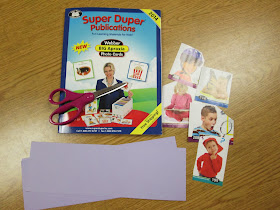I have grown up shopping at my local Goodwill retail store. It's probably the nicest of our three thrift stores. Everything is fairly well-organized (asides from what customers move around) and clean. So I will go ahead and admit that I have a bit of a bias even though I have been to several different outlet stores as well.
Goodwill Retail Pros:
- Shelving. At most Goodwill retail stores, books and games are generally stored on shelves. (I've been to a few that store the games with toys on top of clothes racks to better protect them from little hands.) The shelves make it really easy to see the merchandise and pick out what you want.
- Atmosphere. At the retail stores, you rarely ever see people with gloves on their hands and masks on their faces. You can easily see the clean items from the dirty ones without ever having to touch them (yay shelving!).
- No swarms of people. You just walk down the aisle and look for treasures. The clothing section is known for some buggy bumper cars from time to time, but most of the time you don't have to fight to look.
- Clear prices. Having a rough estimate of how much you've spent before you get to the register is truly a wonderful thing.
- Watchful staff. This is always a plus when parents decide to use the store as a daycare center.
Goodwill Retail Cons:
- Antique dealers. Some of them are really bad about buying up all the toys and games to resale in about 20 years.
- Favoritism. Goodwill has signs up everywhere about "it's only fair" but I have seen them hold stuff back for certain customers. They will bring the item directly to that customer without ever letting it go on the floor.
- Mark ups on items they think are popular, antique, or new. Melissa and Doug items are usually the worst.
- Missing pieces. This isn't really a fault of Goodwill per say, but you really have to check to make sure games have all of their pieces in the store.
Goodwill Outlet Pros:
- Buy by the pound. This can be cheaper for children's books and some games. I'm not sure that it is always a plus.
- You get the thrill of going on a scavenger hunt by digging through the bins.
- It's essentially fair- The workers make everyone stand back until the bin is in place. However, the regulars have a swarming system that generally makes it difficult to look until they are finished.
Goodwill Outlet Cons:
- It's not as clean as the retail stores. Things get broken in those bins and the staff doesn't remove them until the bin is taken to the back.
- The swarms. It's a mad rush to get the best finds out of the bins. I've seen kids throw stuff in the way and push people out to help their parents get the best stuff.
- Unsupervised children. Enough said.
- Lack of shelves. It's really hard to see little stuff (namely figurines & small game pieces) in the bins. It takes much more effort to find items.
(You can check out this blog post for a very detailed description of one outlet store.)
- Bring hand sanitizer- I always feel exceptionally nasty after digging through the bins at the Goodwill outlet. It's fun, but you really don't know who's been digging through the bins before you.
- Give yourself plenty of time- It takes a while to dig through the bins- even the ones that have been picked over- for those hidden treasures.
- Look through the bins that have less traffic. Yes, they have been picked over already but you can find things that were lost in the shuffle.
- Be prepared to be frustrated by the regulars. You will see them with mounds of things that you wish you could buy for your therapy room. It's like they have a secret talent at finding wonderful toys in a haystack.
I think that every Goodwill shopper should try going to the outlet store once. It's something that you really just have to experience to understand. However, I strongly believe that the retail stores are the better way to go for therapy materials.













